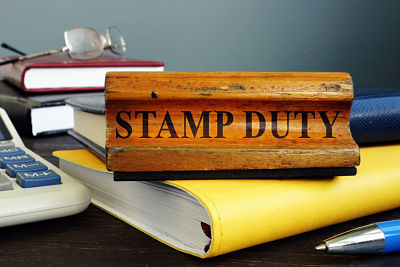
Stamp duty has been in the spotlight the last few months after the Chancellor’s announcement in July that it would be suspended for all properties of £500,000 or less. The market saw a predictable surge in interest after the lull of lockdown. Estate agents and solicitors are reporting marked uptick in people trying to get their new property bought before the holiday ends in March next year.
But aside from these big announcements (like the Higher Rate on Additional Dwellings in 2016) even property investors tend not to pay much attention to the issue of Stamp Duty. That means that they – like any other UK property buyer – run the risk of paying thousands of pounds more than they should when acquiring their property. In this article, we will highlight the basics any investor needs to be aware of when it comes to Stamp Duty.
HRAD to work out
Firstly, the holiday doesn’t apply to the Higher Rate Additional Dwelling charge, meaning that if you as a landlord intend to benefit, you need to be aware that it will reduce your Stamp Duty liability but not wipe it out. That additional 3% will still apply to each ‘slice’ of the purchase price paid, meaning that on a £500,000 property you will still pay 3% on the first £125,000, 3% on the next £125,000 and 3% on the additional £250,000, meaning a total Stamp Duty bill of £15,000. Certainly, a saving on the £30,000 you would have paid, but still not an inconsequential amount.
Even HRADer to work out
Leaving the holiday aside, when things are operating normally, there is often confusion for solicitors and other property professionals as to exactly when the HRAD does and does not apply. There are countless stories of buyers who have had to take additional funding from a mortgage lender or short-term credit elsewhere to deal with an unexpected additional Stamp Duty cost that’s only emerged post-exchange. There are also stories of buyers who have paid the HRAD when it wasn’t due and have had to jump through various hoops and red tape to get that money refunded.
Multiple Dwellings Relief
Another complexity in the Stamp Duty area revolves around an earlier alteration to the law that was designed to encourage property investment. This relief actually reduces the amount of Stamp Duty due overall if more than one dwelling is purchased in the same transaction or a series of linked ones. The obvious is when one buys a block of flats or several houses in a road, but the complexity arises around the specific definition of ‘dwelling’. Even now, several cases are being argued around this definition and the specific limits of it – if you buy a property with a self-contained ‘granny annexe’ or similar, chances are that MDR will be claimable. Again, this is a subject of much activity at the moment, with many law firms being pursued by clients who have discovered that MDR may be applicable after the fact, having paid out too much in Stamp Duty.
Incorporation
Landlords are often encouraged to create a limited company and incorporate their property portfolio into the company to provide better tax efficiency for their investments. While it is true that this can save large amounts of money with regards to paying Corporation Tax rather than Income Tax. The way in which the transfer is handled is important. If the transfer is done incorrectly it may lead to a charge of Stamp Duty on the value of all properties transferred. That’s potentially quite a substantial mistake!
HMRC’s Stamp Duty Calculator isn’t fit for purpose
You may not know this, but even your solicitor relies on the calculator on HMRC’s own website to calculate Stamp Duty for your purchase. This would be fine if not for the fact that HMRC themselves have gone on record in the press that the calculator is intended merely as ‘a guide’ and should not be relied upon to provide absolutely accurate figures. The calculator fails to take account of various complexities and allowances within the Stamp Duty legislation, including factors specific to investment purchases, and therefore is even less suitable for landlords.
The best thing to do is treat Stamp Duty like you would any other tax – seek the advice of an expert in the field. Cornerstone Tax have specialised in providing property tax advice for over fifteen years, and in that time have helped thousands of property buyers make sure that they pay the right amount first time, every time. Call them now on 01858 894349 to see how they can help you or visit their website – www.ctatax.uk.com. SDLT Refunds is a division of Cornerstone tax – www.sdltrefunds.co.uk



